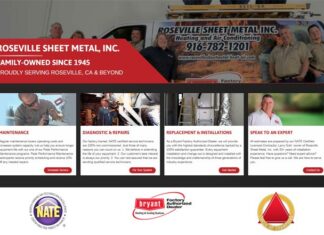In February 1893, Rocklin’s population was expanding, its industrial base was solid and business was booming, so its electorate approved a ballot proposal to incorporated as a city.(1) Rocklin’s ascendancy had begun 40 years earlier during the waning of the gold rush frenzy when ‘discouraged gold seekers clambered up the banks of the rivers and ravines to take up claims on government lands in the foothill and valley regions bordering on mining country’.(2) Rocklin’s most significant gold operations were located at Secret Ravine where, in 2006, oak-studded hills and grass-covered dredger tailing parallel Interstate 80 on the southeast between Roseville and Rocklin Road.(3)
According to State Archeologist and author, Norman Wilson, Rocklin’s original people were the Nisenan, sometimes called Southern Maidu. They dwelled near local waterways for 1500-3000 years before contact with Euro-Americans in the early 19th century. The Nisenan are the people who processed acorns and pine nuts in bedrock mortars that we now see on golf courses and along the banks of area streams. By the mid 1830’s Euro-American diseases had decimated their population. In 1833, 75% of the Nisenan died of malaria brought here from Hawaii by Hudson’s Bay Company traders. (4)
The Gold Rush of the mid-19th century permanently disrupted the culture of the Nisenan as the Argonauts killed many of them or chased them from the land.(5) Descendents of the 19th century Nisenan still reside in South Placer County but the traditional life ways have not been seen in Rocklin since 1904.(6)
Rocklin’s original town site was included in a 160-acre tract filed by James Bolton, a native of Ireland, in 1866. (7) Most of the tract is now called Downtown Rocklin even though the original Downtown Rocklin, along Front Street and Railroad Avenue, burned down in a series of fires in the early 20th century. It was never rebuilt. (8) Today the Bolton tract would extend as far west from downtown as Johnson Spring View Park, part of the Sunset Whitney golf course and the lower end of Clover Valley.
The largest part of today’s Rocklin covers the Spring Valley Ranch which George Whitney established as a sheep ranch in the mid 1850’s. His son Joel Parker Whitney, called Parker then, acquired control of the ranch in the early 1870’s and, by the time of his death in 1913, had expanded it to 27,000 acres, most of it bordered roughly by Roseville, Lincoln, Downtown Rocklin and Penryn.(9)
The Rocklin Historical Society alliterates symbols for Rocklin’s early development with the Rocklin History Museum’s theme ‘Rock, Rails and Ranches’.
The ‘Rock’ of course is granite. Rocklin is astride high quality and easily accessible granite in a 100+ square mile eroded granite belt that extends from Folsom to Lincoln.(10) What seems to be Rocklin’s first quarry is located north of the corner of Farron and Pacific. A Lions Club plaque at the site calls it the Hathaway Quarry and indicates that it opened in 1861 and supplied granite for the state capital.
In March 1864 the Central Pacific completed the eastward stretch of the transcontinental railroad through Rocklin. (11) The Hathaway quarry and an un-named quarry southwest of the corner of Front Street and Farron are very close to the tracks and seem to be the source of material for culverts and railroad beds as the project inched into the Sierra. By 1880, assisted by easy access to rail shipping, at least 6 quarries were supplying granite for projects such as Rocklin’s roundhouse and San Francisco’s Palace Hotel Rocklin’s granite industry shrunk to one quarry in the early 1880’s as public projects dried up. (12) But a better economy and pneumatic quarrying technology brought the quarries to their peak of activity by 1895 when at least 12 quarries operated. (13)
The ‘Rails’ in the museum’s theme signify the role of the railroad in Rocklin’s growth and Rocklin’s importance to the transcontinental railroad as the western engine turnaround point and roundhouse for trans-Sierra runs from 1866 to1908. Theodore Judah, the Central Pacific’s famed chief engineer, had proposed a roundhouse at Roseville. After his death in early 1863, Judah’s successors chose Rocklin instead because Rocklin was closer to the point where helper engines were needed to surmount the Sierra. The roundhouse complex, completed in 1867, included 25 stalls for servicing engines and an 8,000 square foot woodshed where Rocklin woodchoppers stored the 16 cords of wood that each engine needed for the 82-mile strain to the Sierra summit. (14) In its heyday, two-years prior to its move to Roseville in 1908, the operation employed 300 people with a monthly payroll of $25-30,000. (15)
The Central Pacific probably gave Rocklin its name in 1864 when ‘Rocklin’ first appeared in print in a railroad time schedule as an obscure stopping point between Junction(now Roseville) and Pino (now Loomis). The quarries might have inspired the name. According to the author of an Environmental Impact Report prepared in 1989 for the Stanford Oaks Project (now Whitney Oaks) the term ‘lin’ is Celtic for ‘spring’ or ‘pool’. So ‘Rocklin’ could literally translate to ‘rock pool’, a term that fits Rocklin’s rainwater pooled and abandoned quarries even today. (16)
The ‘Ranches’ in the museum’s theme signify agriculture’s role in Rocklin’s ascendancy. By the mid 1880’s at least a dozen ranches, ranging from 80 to 500 acres, were raising tree fruit, grains, grapes and livestock (17) Joel Parker Whitney’s 36 square miles Spring Valley Ranch dwarfed these operations. Buoyed by easy access to far away markets by rail, the ranch produced wheat, tree fruits, livestock including a hearty breed of sheep for wool, and later grapes and citrus. The ranch included 47 miles of fencing, 50 miles of roads, 15 residences including J.P. Whitney’s famous ‘The Oaks’ mansion, and numerous barns and sheds.(18)
By the time of its incorporation in 1893, Rocklin was prosperous and primed for the challenges and accelerating growth of the 20th century a time when it adopted modern technology as an important part of its industrial base and its population soared from 1,000 to more than 50,000. (In 2006, Rocklin’s ‘built out’ population was estimated at about 73,000 by about 2015.)
Notes
(1) Placer Herald, February 18, 1893 (February 14 was the date of the vote)
(2) Leonard Davis, Rocklin, P.3
(3) The U.S. Census of 1860 for Secret Ravine shows that the working population was made up mostly of miners.
(4) Norman Wilson and Arlene Towne, Nisenan, Smithsonian, Volume 8 P. 396 et seq. The estimate of 1500 to 3,000 years is from a conversation with Wilson and Towne as they set up the Nisenan exhibit at the Rocklin History Museum in 2002.
(5) Nisenan, Norman Wilson and Arlene Towne, Smithsonian, Volume 8. p.396
(6) Leonard Davis, Rocklin, P.2
(7) Leonard Davis, Rocklin, P.3
(8) Leonard Davis, Rocklin, P.75
(9) Richard Miller, Fortune Built by Gun, P.160 and Davis, Rocklin, P. 4. Estimates of the ranch’s maximum size vary between 18,000 and 30,000+ acres, possibly because Parkers land holdings were not contiguous and varying estimates include varying groups of acreages at varying times of the ranch’s expansion.
(10) Leonard Davis, Rocklin, P.75
(11) Sacramento Union, March 21, 1864
(12) Leonard Davis, Rocklin, P.41
(13) Leonard Davis, Rocklin, P.45
(14) Leonard Davis, Rocklin, P.24
(15) Leonard Davis, Rocklin, P.59
(16) There are at least 3 solid theories about Rocklin’s naming, none provable and each supported by good evidence. For a discussion of these theories see Where did Rocklin come from?, an article in this series
(17) Leonard Davis, Rocklin, P.33, 42
(18) Leonard Davis, Rocklin, P.33
‘Rocklin’ by Leonard M. Davis is available at the Rocklin History Museum at 3895 Rocklin Road for a donation of $10.00
‘Nisenan’ by Norman L. Wilson and Arlean Towne is published in Smithsonian Handbook of North American Indians Volume 8, available at the Sierra College Library. Norman and Arlean completed the Nisenan exhibit at the Rocklin History Museum in 2002. Both died during the following year.
(21+ years strong)
Welcome to the brighter side!
Get in front of local customers! 24/7 (365)























